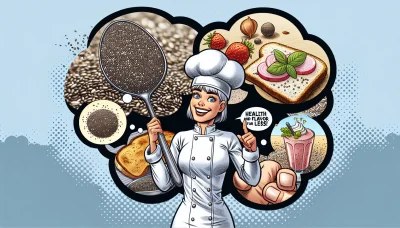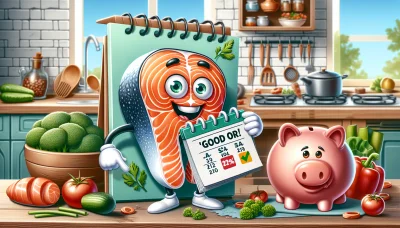Do you peel zucchini for bread Quiz
Test Your Knowledge
Question of
Do You Peel Zucchini for Bread?
When it comes to baking zucchini bread, one of the most common questions that arises is whether or not to peel the zucchini before adding it to the mix. The short answer is, it's not necessary to peel zucchini. The skin of the zucchini is thin, soft, and perfectly edible. In fact, keeping the skin on not only adds a beautiful green speckle to your bread but also contributes additional nutrients. Zucchini is a nutrient-rich vegetable, offering vitamins such as vitamin C and K, minerals like potassium and manganese, and dietary fiber. Including the skin increases the dietary fiber content, which is beneficial for healthy digestion. So, not only does unpeeled zucchini enhance the nutritional profile of your bread, but it also saves you time in the kitchen. Enjoy your zucchini bread knowing you're reaping all the health benefits this vegetable has to offer.
The Nutritional Benefits of Zucchini
- Vitamin A: Essential for healthy eyesight, skin health, and immune function.
- Vitamin C: Supports immune system health, helps in the absorption of iron, and has antioxidant properties.
- Vitamin K: Important for blood clotting and healthy bones.
- Manganese: Plays a role in the metabolism of nutrients and in the production of collagen for wound healing.
- Potassium: Vital for heart health, muscle function, and maintaining a healthy blood pressure level.
- Magnesium: Supports muscle and nerve function, blood glucose control, and bone health.
- Dietary Fiber: Promotes healthy digestion, helps in maintaining a healthy weight, and lowers the risk of heart disease.
To Peel or Not to Peel: The Great Zucchini Debate
When it comes to making zucchini bread, a common question arises: to peel or not to peel the zucchini? This decision can significantly impact both the nutritional content and the texture of the bread. Peeling zucchini removes a portion of the dietary fiber, which is primarily located in the skin. Fiber is essential for healthy digestion and can add a subtle texture to the bread. On the nutritional front, the skin of zucchini is also a source of vitamins and minerals, such as vitamin C and potassium, which are partially lost when the vegetable is peeled.
Texture-wise, leaving the skin on results in a slightly more robust bread, adding a bit of color and visual appeal with specks of green throughout. Some argue that the skin can introduce a slight bitterness, but this is often balanced by the other ingredients in the bread. On the other hand, peeling the zucchini can result in a smoother, more uniform texture, which might be preferable for those seeking a more traditional bread experience. Ultimately, the decision to peel or not to peel zucchini for bread comes down to personal preference in taste and texture, as well as nutritional priorities.
Simple Steps to Preparing Zucchini for Bread
- Wash the zucchini thoroughly under running water to remove any dirt or pesticides.
- Trim the ends off the zucchini using a sharp knife.
- Grate the zucchini using a box grater or food processor with a grating attachment.
- Note: Peeling the zucchini is optional. You can leave the skin on for added nutrients and fiber, or peel it if preferred for texture or dietary needs.
Maximizing Health Benefits: Incorporating Zucchini into Your Diet
Zucchini, a versatile and nutrient-packed vegetable, offers a plethora of health benefits and can be incorporated into your diet in numerous innovative ways beyond the traditional zucchini bread. Its high fiber content, low calorie count, and rich vitamin and mineral profile make it an excellent choice for those looking to enhance their healthy eating habits. Consider adding zucchini to your morning smoothies for an extra boost of nutrients without altering the taste significantly. Spiralized zucchini can serve as a low-carb alternative to pasta, complementing your favorite sauces and toppings while significantly reducing your calorie intake. For a delightful and healthy snack, try slicing zucchini into thin strips, seasoning them, and baking them into crispy chips. Zucchini can also be stuffed with a protein of your choice and baked for a satisfying and nutritious meal. By exploring these varied uses of zucchini, you can enjoy its health benefits in delicious and creative ways, making it a staple in your diet for a healthier lifestyle.
Frequently Asked Questions About Zucchini Bread
-
How should I store zucchini bread to keep it fresh?
Zucchini bread should be wrapped tightly in plastic wrap or stored in an airtight container. It can be kept at room temperature for a couple of days or refrigerated for up to a week.
-
How long does zucchini bread last?
When properly stored, zucchini bread can last at room temperature for about 2 days, in the refrigerator for up to 1 week, and in the freezer for about 2-3 months.
-
Can I make zucchini bread gluten-free?
Yes, zucchini bread can easily be made gluten-free by substituting the regular flour with a gluten-free flour blend. Make sure to check that the blend is a 1:1 substitute for wheat flour.
-
Is it possible to make vegan zucchini bread?
Yes, to make vegan zucchini bread, replace the eggs with a vegan alternative such as flax eggs, use dairy-free milk, and ensure that you're using vegan sugar.
-
Can I freeze zucchini bread?
Yes, zucchini bread freezes well. Wrap it tightly in plastic wrap and then in aluminum foil or place it in a freezer bag. Label with the date and freeze for up to 2-3 months. Thaw overnight in the refrigerator before serving.
Delicious and Healthy Zucchini Bread Recipe
| Ingredients | Instructions |
|---|---|
|
|












